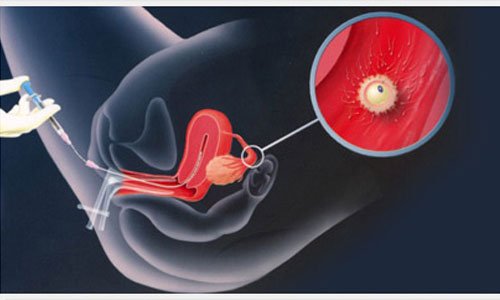Intrauterine insemination (IUI)

Intrauterine insemination (IUI) is a procedure that usually involves the placement of concentrated and washed sperm into the woman’s uterus in order to increase the number of sperm that will eventually reach to the egg. This, in turn, will further increase the chances of a proper fertilization and development of the embryo to increase the chances of a healthy pregnancy.
The process is relevant in most of the cases as generally, after an intercourse, only a few hundred sperms will only be able to make it to the cervix and out the fallopian tubes to the egg. While IUI is been brought into picture, millions of motile sperm are placed into the women’s uterus and out the fallopian tubes.
IUI is usually timed as per the patient’s ovulation cycle and the same gets accomplished with a close monitoring coming along with a series of blood tests and ultrasounds. Generally, it is appropriately timed to come about 36 hours after the medication process (HCG injection) to cause ovulation.
IUI Process
The whole process is undertaken in the laboratory where the sperm is first concentrated in a centrifuge while discarding the remaining semen. The minute drop of fluid comprising of the concentrated motile sperm is then out into a catheter, brought into the room by a medical expert or a nurse.
A physician or a nurse will then put a speculum in order to monitor and visualize the cervix. The process then includes passing of 1mm catheter via the cervix into the uterus, leading to the release of millions of motile sperm into the uterus and out the fallopian tubes. The whole process is quite easy and required minimal time in the process
Relevance of IUI
IUI is generally being used alongside the fertility medications in order to improve the overall chances of success in the pregnancy. It’s only in rare situations that the same is used alongside with a natural cycle. Moreover, the process also comes relevant in case of slightly minimized sperm count or motility, unreceptive cervical condition, sexual dysfunction, along with the use of the donor sperm
The process also comes useful in cases of unexplained infertility, alongside proper fertility medication in order to enhance the overall chances of fertilization.
IUI process requires the sperm to reach and fertilize the egg on its own and thus, it doesn’t comes useful with couples which are coming with a very low sperm count, sperm motility issues, or issues like abnormal sperm morphology. IUI process is also not recommended to people coming along with several tubal diseases.

Why choose Intrauterine Insemination?
Intrauterine insemination is a simple process which doesn’t require much effort, time and money and this is why it’s so popular amongst the couples around. Moreover, the Couples can opt for intrauterine insemination in any of the following cases:
- Unexplained infertility issues
- Ovulation issues
- Endometriosis
- Anti-sperm antibodies (Cervical Mucus Problems)
Step 1
Consultation with the physician
Initially, both the male and female partners undergo a thorough medical examination which includes a series of tests and diagnosis. This will also include a meeting with the embryologist. Firstly, the semen of the male partner is checked and diagnosed on various parameters like quality, quantity, and movement of the sperm.
Step 2
Follicles Monitoring
During the same process, the female partner will be taking the small dosages of certain prescribed fertility drugs. Afterwards, the physician will be monitoring the development of the follicles in the ovary with the help of the ultrasound. It’s only after seeing the development of the follicles, the patient is then recommended for the hCG injection (trigger) for ovulation.
Step 3
Retrieving the Sperm sample
The male partner is then been asked to provide a sperm sample at the day of the Insemination. The sperm samples are then been processed and the healthiest one amongst the bunch gets selected for further fertilization process.
Step 4
Insemination Process
Insemination process gets along with the placement of the washed and concentrated sperm right into the uterus of the women, which ultimately reduces the overall distance sperm have to travel in the whole process. The process gets repeated for certain successive days in order to further increase the chances of conception.
Step 5
Medicinal treatment
Once the insemination procedure is been through, the specialist might prescribe certain fertility medicines to the patient in order to enhance their overall chances of pregnancy. The Physician will also be ascertaining the timing and number of tests and diagnosis required in order to figure out the overall chances of achieving pregnancy by the person under the observation.
